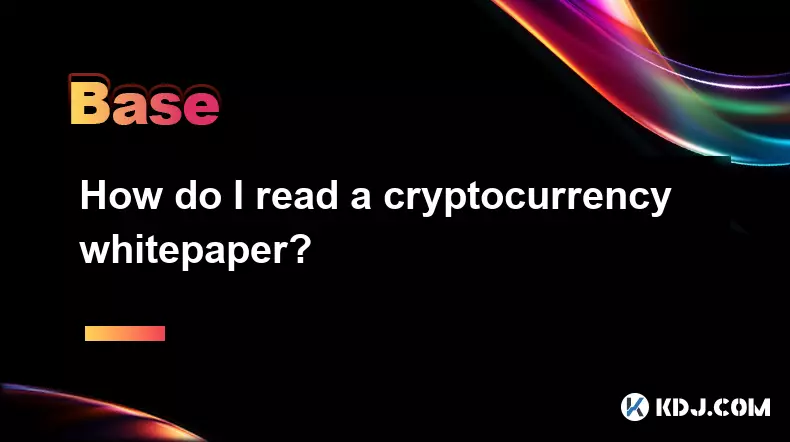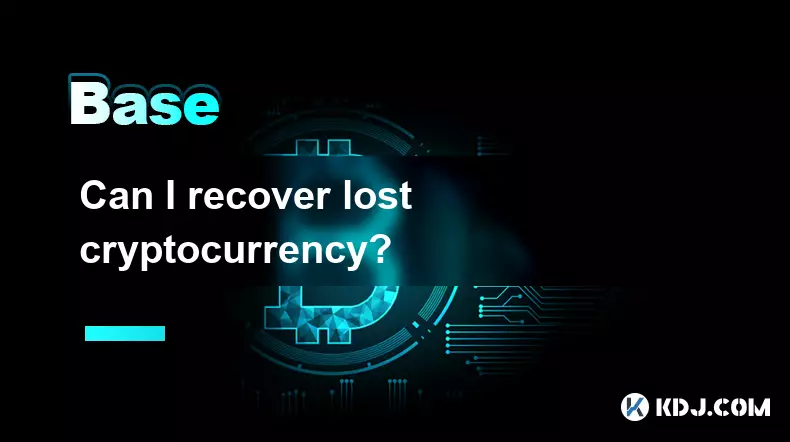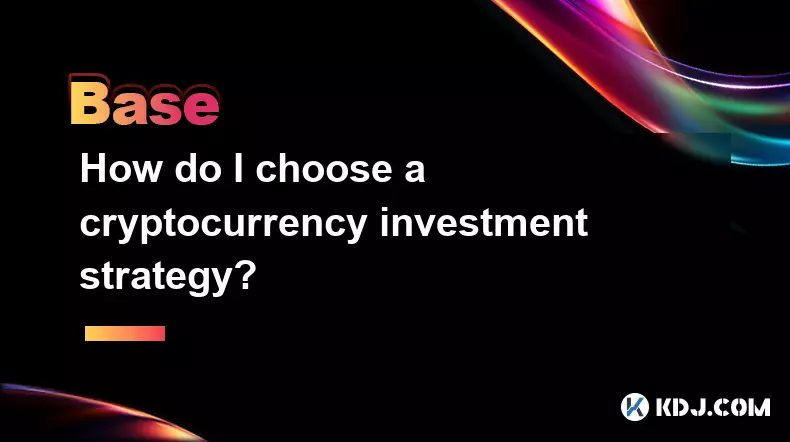-
 bitcoin
bitcoin $122659.385674 USD
0.52% -
 ethereum
ethereum $4484.113342 USD
-0.09% -
 bnb
bnb $1304.229256 USD
-0.85% -
 tether
tether $1.000204 USD
-0.03% -
 xrp
xrp $2.860636 USD
-0.51% -
 solana
solana $227.288799 USD
2.36% -
 usd-coin
usd-coin $0.999805 USD
0.01% -
 dogecoin
dogecoin $0.252837 USD
1.18% -
 tron
tron $0.341149 USD
1.12% -
 cardano
cardano $0.830507 USD
0.33% -
 hyperliquid
hyperliquid $45.792319 USD
0.04% -
 chainlink
chainlink $22.422164 USD
1.55% -
 ethena-usde
ethena-usde $1.000283 USD
0.01% -
 sui
sui $3.511389 USD
0.83% -
 stellar
stellar $0.385276 USD
-0.44%
How to participate in a crypto airdrop?
A crypto airdrop distributes free tokens to wallets to boost awareness and adoption, often requiring tasks like holding crypto or joining social channels.
Aug 12, 2025 at 11:58 pm

Understanding the Concept of a Crypto Airdrop
A crypto airdrop is a distribution of free tokens or coins to wallet addresses, typically conducted by blockchain projects to promote awareness, encourage adoption, or reward early supporters. These tokens are often distributed based on specific eligibility criteria such as holding a certain cryptocurrency, interacting with a decentralized application (dApp), or completing social media tasks. Projects use airdrops as a marketing strategy to grow their community and decentralize token ownership. To participate effectively, users must understand the different types of airdrops: standard airdrops, bounty airdrops, holder airdrops, and exclusive airdrops. Each has distinct requirements and verification processes. Recognizing these distinctions ensures participants align their actions with the correct expectations and avoid scams.
Identifying Legitimate Airdrop Opportunities
The cryptocurrency space is rife with fraudulent schemes, making it crucial to verify the legitimacy of any airdrop. Begin by researching the project’s official website and checking for transparent information such as a whitepaper, development team, and roadmap. Legitimate projects typically have active social media channels like Twitter, Telegram, and Discord where announcements are made. Use blockchain explorers like Etherscan or BscScan to confirm token contract addresses and ensure they are not counterfeit. Avoid airdrops that ask for private keys or direct transfers of funds. Instead, look for those that only require wallet address submission or minimal interaction. Third-party platforms such as AirdropAlert, CoinMarketCap Airdrops, and Earnifi can help identify vetted opportunities, though independent verification remains essential.
Setting Up a Compatible Wallet
To receive airdropped tokens, users must have a non-custodial cryptocurrency wallet that supports the blockchain network on which the tokens are issued. Most airdrops occur on Ethereum, Binance Smart Chain, Polygon, or Solana. Recommended wallets include MetaMask, Trust Wallet, and Phantom (for Solana). Install the wallet application from the official website or app store to avoid counterfeit versions. After installation, securely back up the recovery phrase and never share it. Ensure the wallet is connected to the correct network—switching between Ethereum and BSC, for example, requires manual network configuration. Once set up, the wallet address can be used across multiple airdrop platforms. Remember, a single wallet can receive tokens from various blockchains if properly configured.
Completing Airdrop Requirements Step by Step
Each airdrop has unique participation steps. Common requirements include:
- Registering on the project’s website using a valid email address
- Connecting your wallet through WalletConnect or browser extension
- Holding a minimum amount of a specified cryptocurrency (e.g., holding 0.1 ETH)
- Following social media accounts such as Twitter, Telegram, and Discord
- Retweeting posts, joining groups, or tagging friends to increase visibility
- Completing quests on platforms like Galxe or Zealy, which track on-chain and off-chain actions
For example, if a project requires you to hold a token, use a decentralized exchange like Uniswap or PancakeSwap to acquire it. After fulfilling all tasks, submit your wallet address through the official form. Some airdrops use snapshot dates—a specific block height or time when wallet balances are recorded—so ensure eligibility before that moment. Always double-check task completion using the platform’s dashboard before considering participation final.
Monitoring and Claiming Received Tokens
After completing the required steps, participants must wait for the distribution date. Projects usually announce timelines via their official channels. To check if tokens have been received:
- Open your wallet and look for incoming transactions
- Use a blockchain explorer by pasting your wallet address to view transaction history
- Add the token manually if it doesn’t appear automatically—this requires the token contract address, symbol, and decimals
- In MetaMask, click “Import Tokens” and enter the correct details to display the balance
Some airdrops distribute tokens in multiple phases or require a claim action after eligibility is confirmed. For instance, a project might deploy a smart contract where users must interact with a “claim” button to receive tokens. Gas fees may apply during this process, so ensure your wallet has sufficient native cryptocurrency (e.g., ETH for Ethereum, BNB for BSC). Never interact with unknown contracts—verify the contract address through official sources before proceeding.
Security Best Practices During Participation
Engaging in airdrops exposes users to potential security risks. Protect yourself by:
- Never sharing private keys or seed phrases with anyone
- Using a dedicated wallet for airdrops to isolate sensitive funds
- Avoiding phishing websites by double-checking URLs and SSL certificates
- Installing browser extensions like MetaMask only from official sources
- Revoking smart contract permissions after participation using tools like Revoke.cash
If a project asks for a small “gas fee” in tokens other than the native network currency, it is likely a scam. Genuine airdrops do not require payment to receive tokens. Enable two-factor authentication on associated email and social accounts. Regularly audit connected dApps and remove access from unused platforms to minimize attack surface.
Frequently Asked Questions
Can I use the same wallet for multiple airdrops?Yes, a single non-custodial wallet can participate in numerous airdrops across different blockchains. Ensure the wallet supports the relevant networks and that you’re using the same address consistently for tracking purposes.
What if I don’t receive the airdrop after completing tasks?Verify that you met all criteria before the snapshot or deadline. Check the project’s official channels for updates. Some distributions are delayed or require manual claiming. If no communication exists after a reasonable period, the project may have been inactive or fraudulent.
Do airdropped tokens have immediate trading value?Not necessarily. Some tokens are locked or vest over time. Others may not be listed on exchanges immediately. Check the project’s tokenomics for details on unlock schedules and liquidity plans.
Is it safe to connect my wallet to airdrop platforms?Connecting your wallet is generally safe if done through official, verified websites. However, always review the permissions requested. Use wallet features like WalletGuard or Blockaid to detect risky interactions before confirming.
Disclaimer:info@kdj.com
The information provided is not trading advice. kdj.com does not assume any responsibility for any investments made based on the information provided in this article. Cryptocurrencies are highly volatile and it is highly recommended that you invest with caution after thorough research!
If you believe that the content used on this website infringes your copyright, please contact us immediately (info@kdj.com) and we will delete it promptly.
- CEA Industries & Jon Najarian: Bridging Traditional Finance with BNB
- 2025-10-09 21:05:16
- Binance Alpha's AB Token Crash: A Cautionary Tale in Cryptocurrency
- 2025-10-09 20:45:17
- Crypto Investors Embrace Stock-Picking: Bitwise CEO's Insight
- 2025-10-09 21:05:16
- Coinbase, Cruise, and Crypto Compliance: Navigating the Waters of Digital Finance
- 2025-10-09 21:10:12
- Crypto ETFs, Altcoins, and Wall Street: Navigating the New Frontier
- 2025-10-09 20:45:17
- Bitcoin's Decade of Dominance: A Super Reason to Hold for the Next 10 Years?
- 2025-10-09 20:25:15
Related knowledge

How does cryptocurrency achieve decentralization?
Sep 30,2025 at 04:37am
Understanding the Foundation of Decentralization in Cryptocurrency1. Cryptocurrency achieves decentralization primarily through the use of blockchain ...

What are some common methods of cryptocurrency market manipulation?
Sep 27,2025 at 02:55am
Wash Trading and Its Impact on Market Perception1. Wash trading involves an individual or entity simultaneously buying and selling the same cryptocurr...

How do I read a cryptocurrency whitepaper?
Sep 27,2025 at 05:54am
Understanding the Structure of a Cryptocurrency Whitepaper1. Begin by identifying the executive summary, which outlines the project’s core vision and ...

Can I recover lost cryptocurrency?
Sep 25,2025 at 08:18am
Understanding the Nature of Cryptocurrency Loss1. Cryptocurrency operates on decentralized networks, meaning there is no central authority to reverse ...

How do I choose a cryptocurrency investment strategy?
Sep 27,2025 at 03:55pm
Understanding Risk Tolerance in Crypto Investing1. Assessing personal risk tolerance is a foundational step when entering the cryptocurrency market. V...

How can I earn passive income from cryptocurrency?
Sep 23,2025 at 10:18am
Staking Cryptocurrencies for Regular Returns1. Many blockchain networks operate on a proof-of-stake (PoS) consensus mechanism, allowing users to earn ...

How does cryptocurrency achieve decentralization?
Sep 30,2025 at 04:37am
Understanding the Foundation of Decentralization in Cryptocurrency1. Cryptocurrency achieves decentralization primarily through the use of blockchain ...

What are some common methods of cryptocurrency market manipulation?
Sep 27,2025 at 02:55am
Wash Trading and Its Impact on Market Perception1. Wash trading involves an individual or entity simultaneously buying and selling the same cryptocurr...

How do I read a cryptocurrency whitepaper?
Sep 27,2025 at 05:54am
Understanding the Structure of a Cryptocurrency Whitepaper1. Begin by identifying the executive summary, which outlines the project’s core vision and ...

Can I recover lost cryptocurrency?
Sep 25,2025 at 08:18am
Understanding the Nature of Cryptocurrency Loss1. Cryptocurrency operates on decentralized networks, meaning there is no central authority to reverse ...

How do I choose a cryptocurrency investment strategy?
Sep 27,2025 at 03:55pm
Understanding Risk Tolerance in Crypto Investing1. Assessing personal risk tolerance is a foundational step when entering the cryptocurrency market. V...

How can I earn passive income from cryptocurrency?
Sep 23,2025 at 10:18am
Staking Cryptocurrencies for Regular Returns1. Many blockchain networks operate on a proof-of-stake (PoS) consensus mechanism, allowing users to earn ...
See all articles


























![🚨IS VECHAIN (VET) A DEAD COIN ?? PRICE ANALYSIS [GET READY NOW] 🚨IS VECHAIN (VET) A DEAD COIN ?? PRICE ANALYSIS [GET READY NOW]](/uploads/2025/10/09/cryptocurrencies-news/videos/vechain-vet-dead-coin-price-analysis-ready/68e7b200b067b_image_500_375.webp)















































